Vitamins are essential organic compounds required in small amounts to maintain normal physiological functions, promote growth, and support overall health. Despite being micronutrients, their impact on bodily processes is profound, influencing everything from energy production to immune defense, vision, and mental well-being. This article explores the vital role of vitamins, types, natural sources, deficiency symptoms, and practical tips to maintain optimal levels.
1. What Are Vitamins?
Vitamins are organic substances that our bodies need to perform critical functions. Unlike carbohydrates, proteins, and fats, they do not provide energy, but they facilitate essential metabolic processes.
Vitamins are categorized into two main types:
- Fat-soluble vitamins: Stored in the body’s fat tissues (Vitamins A, D, E, and K).
- Water-soluble vitamins: Not stored in the body and must be replenished regularly (B-complex vitamins and Vitamin C).
Here’s a comprehensive and SEO-optimized report-style write-up on the importance of vitamins, including global and Indian statistics, actions by the World Health Organization (WHO) and the Indian government, supported by scientific research, LSI keywords, and credible sources.
The Importance of Vitamins: Global & Indian Context, Government Actions, and Scientific Backing
🧬 Why Vitamins Matter for Human Health
Vitamins are organic compounds that are essential for numerous biological functions in the human body, including:
- Immunity regulation
- Bone health
- Cell growth
- Wound healing
- Energy production
- Vision and neurological functions
Humans require at least 13 essential vitamins, including vitamins A, B-complex (B1–B12), C, D, E, and K, which must be obtained through diet or supplements as they are not sufficiently synthesized by the body.
🌍 Global Vitamin Deficiency Statistics
Vitamin deficiencies are a silent epidemic—especially in low- and middle-income countries. According to the World Health Organization (WHO) and UNICEF:
- More than 2 billion people globally suffer from micronutrient deficiencies, including vitamin A, D, and B12.
- Vitamin A deficiency affects 190 million children under the age of five and is a major cause of preventable childhood blindness.
- Vitamin D deficiency is widespread, with studies estimating that 1 in 7 people globally have insufficient levels.
- Iron and folate deficiencies, both part of the vitamin/mineral spectrum, are major contributors to maternal mortality and birth defects.
📚 Source: WHO Micronutrient Deficiencies
🇮🇳 Vitamin Deficiency in India: A Public Health Concern
India faces a triple burden of malnutrition—undernutrition, overnutrition, and micronutrient deficiencies.
📊 Key Statistics (India):
- 57% of women and 67% of children under five are anemic, often linked to iron, folate, and vitamin B12 deficiencies (NFHS-5, 2021).
- Up to 70% of Indians are estimated to be vitamin D deficient (ICMR-NIN).
- 40% of preschool-aged children suffer from vitamin A deficiency, risking vision problems.
- Deficiencies in vitamin B12 are prevalent among vegetarians due to its absence in plant-based foods.
📚 Source: National Family Health Survey (NFHS-5)
🌐 What WHO Is Doing to Combat Vitamin Deficiencies
The World Health Organization leads multiple global and regional strategies to improve vitamin and micronutrient levels through:
1. Micronutrient Supplementation Programs
- Vitamin A supplementation for children under five in over 80 countries.
- Iron-folic acid (IFA) tablets for pregnant women to reduce anemia.
- Fortified foods (e.g., vitamin A-fortified oil, iodine in salt).
2. Setting Global Guidelines
- WHO provides daily recommended intakes, diagnostic criteria, and intervention protocols for vitamin deficiencies.
3. Promoting Universal Fortification
- Encourages large-scale food fortification: salt, flour, oil, and dairy products with essential vitamins.
4. Global Health Campaigns
- Partnerships with UNICEF, GAVI, and the Global Alliance for Improved Nutrition (GAIN) for multi-country programs on micronutrient improvement.
📚 Source: WHO Vitamin A Supplementation
🇮🇳 Steps Taken by the Indian Government
The Government of India has launched various policies, schemes, and partnerships to tackle vitamin and micronutrient deficiencies:
✅ 1. Poshan Abhiyaan (National Nutrition Mission)
- Targets malnutrition and micronutrient deficiencies through community-based interventions and real-time monitoring.
✅ 2. Food Fortification Programs
- The Food Safety and Standards Authority of India (FSSAI) mandates fortification of:
- Salt with iodine & iron
- Edible oil and milk with vitamins A & D
- Wheat flour & rice with iron, folic acid, and vitamin B12
- The +F logo helps consumers identify fortified foods.
✅ 3. Weekly Iron and Folic Acid Supplementation (WIFS)
- For adolescent girls and boys in government and government-aided schools.
✅ 4. Vitamin A Supplementation
- Biannual high-dose vitamin A drops for children aged 6 months to 5 years.
✅ 5. Mid-Day Meal Scheme & PM POSHAN
- Provides fortified meals in schools to combat nutrient deficiencies.
📚 Source: FSSAI Fortification Standards
🔬 Scientific Research Supporting Vitamin Supplementation
1. Vitamin A & Child Mortality
A meta-analysis by Lancet (2017) found that vitamin A supplementation reduces child mortality by 24% in populations at risk of deficiency.
2. Vitamin D & Immunity
A 2020 BMJ study showed that vitamin D supplementation significantly lowers the risk of respiratory tract infections.
3. Folate & Birth Defects
WHO-supported studies indicate that 400 mcg of folic acid daily before and during pregnancy reduces neural tube defects by over 70%.
📚 References:
🔍 LSI Keywords to Use for SEO
To improve discoverability and semantic relevance, include the following LSI keywords:
- vitamin deficiency diseases
- importance of vitamins in daily diet
- vitamin supplements for immunity
- child nutrition and vitamins
- fortified foods in India
- vitamin D in Indian population
- micronutrient malnutrition
- multivitamin health benefits
- anemia and vitamin B12
- public health nutrition programs
📚 Key Resources and Links
- World Health Organization: Micronutrient Deficiencies
- NFHS-5 India Data
- FSSAI Food Fortification Resource Centre
- UNICEF Nutrition Programs
- ICMR-NIN Publications on Micronutrients
2. Types of Vitamins and Their Benefits
Vitamin A (Retinol)
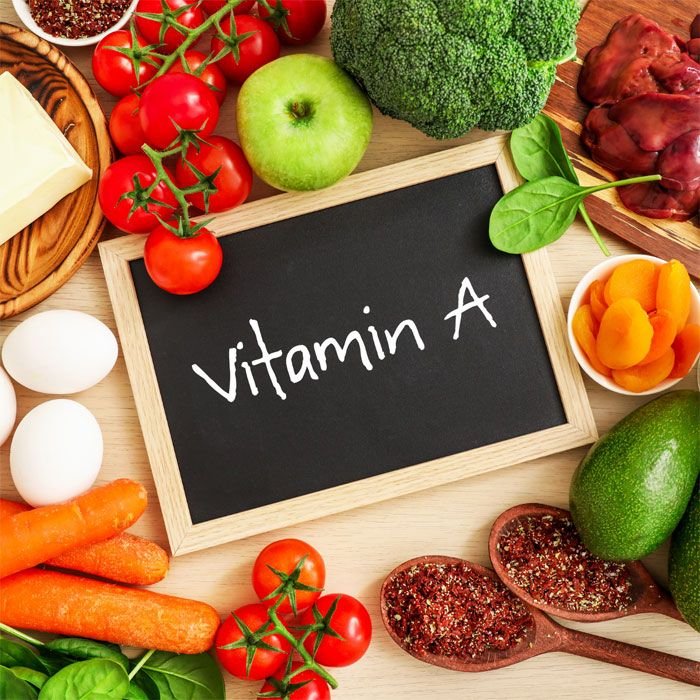
- Function: Supports eye health, immune function, and skin integrity.
- Sources: Carrots, sweet potatoes, spinach, liver, egg yolks.
- Deficiency: Night blindness, dry eyes, increased infection risk.
- Excess: Can cause liver damage, nausea, and headaches.
Vitamin B Complex
The B vitamins are a group of eight water-soluble vitamins that work together to convert food into energy and support brain function, red blood cell production, and cell metabolism.
B1 (Thiamine)
- Function: Supports nervous system and energy metabolism.
- Sources: Whole grains, pork, legumes.
- Deficiency: Beriberi, fatigue, irritability.
B2 (Riboflavin)
- Function: Helps in energy production and cellular function.
- Sources: Milk, eggs, green vegetables.
- Deficiency: Cracks at the corners of the mouth, sore throat.
B3 (Niacin)
- Function: Aids in digestion and skin health, and reduces cholesterol.
- Sources: Chicken, tuna, peanuts.
- Deficiency: Pellagra (diarrhea, dermatitis, dementia).
B5 (Pantothenic Acid)
- Function: Helps in the synthesis of coenzyme A and fatty acids.
- Sources: Avocados, yogurt, eggs.
- Deficiency: Fatigue, insomnia, irritability.
B6 (Pyridoxine)
- Function: Vital for neurotransmitter function and metabolism.
- Sources: Bananas, poultry, potatoes.
- Deficiency: Anemia, depression, confusion.
B7 (Biotin)
- Function: Promotes healthy skin, hair, and nails.
- Sources: Eggs, almonds, cauliflower.
- Deficiency: Skin rash, hair loss, fatigue.
B9 (Folate/Folic Acid)
- Function: Essential for DNA synthesis and cell division.
- Sources: Leafy greens, legumes, citrus fruits.
- Deficiency: Neural tube defects in pregnancy, anemia.
B12 (Cobalamin)
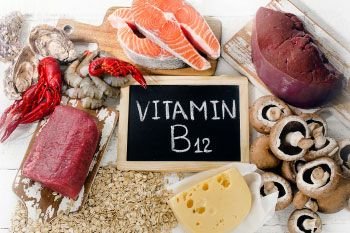
- Function: Crucial for nerve function and red blood cell formation.
- Sources: Meat, fish, dairy, fortified cereals.
- Deficiency: Pernicious anemia, nerve damage, fatigue.
Vitamin C (Ascorbic Acid)
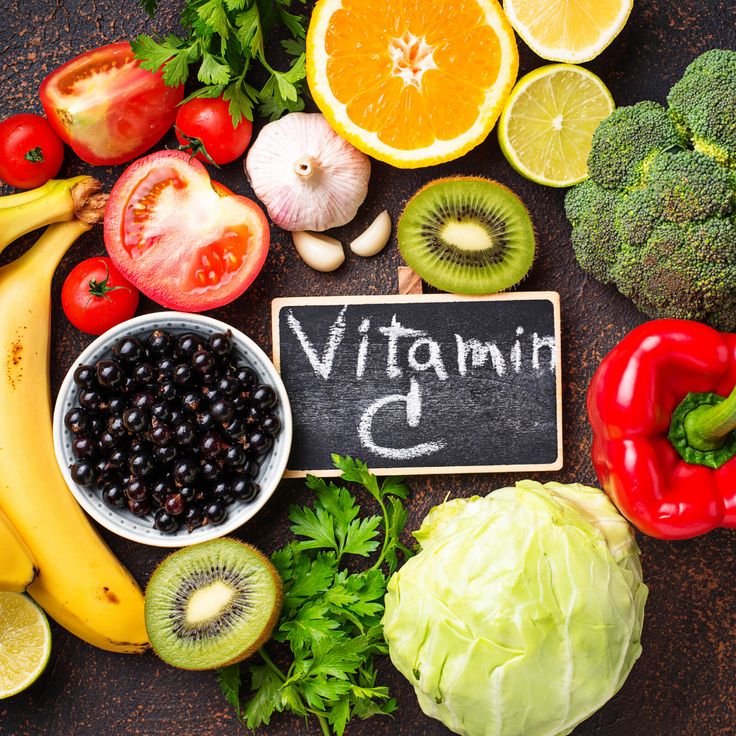
- Function: Acts as an antioxidant, boosts immunity, and aids collagen synthesis.
- Sources: Citrus fruits, strawberries, bell peppers, broccoli.
- Deficiency: Scurvy, bleeding gums, slow wound healing.
- Excess: Can cause stomach cramps and diarrhea.
Vitamin D
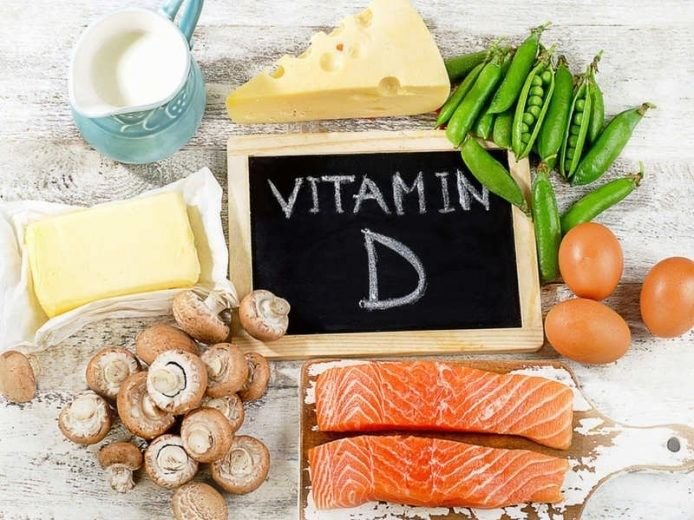
- Function: Enhances calcium absorption for bone health, and supports immune function.
- Sources: Sunlight, fortified dairy, egg yolks, fatty fish.
- Deficiency: Rickets in children, osteomalacia in adults.
- Excess: Can lead to calcium buildup, and kidney damage.
Vitamin E (Tocopherol)
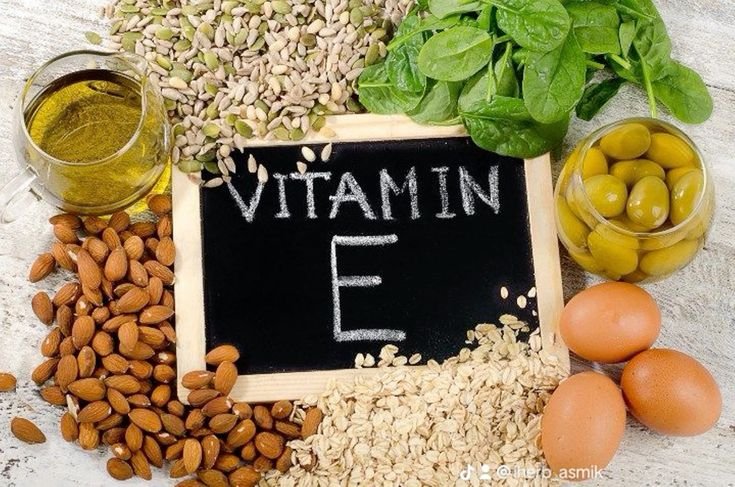
- Function: Protects cells from oxidative stress, and supports skin and eye health.
- Sources: Nuts, seeds, vegetable oils, spinach.
- Deficiency: Nerve damage, muscle weakness.
- Excess: Increased risk of bleeding due to its anticoagulant effect.
Vitamin K
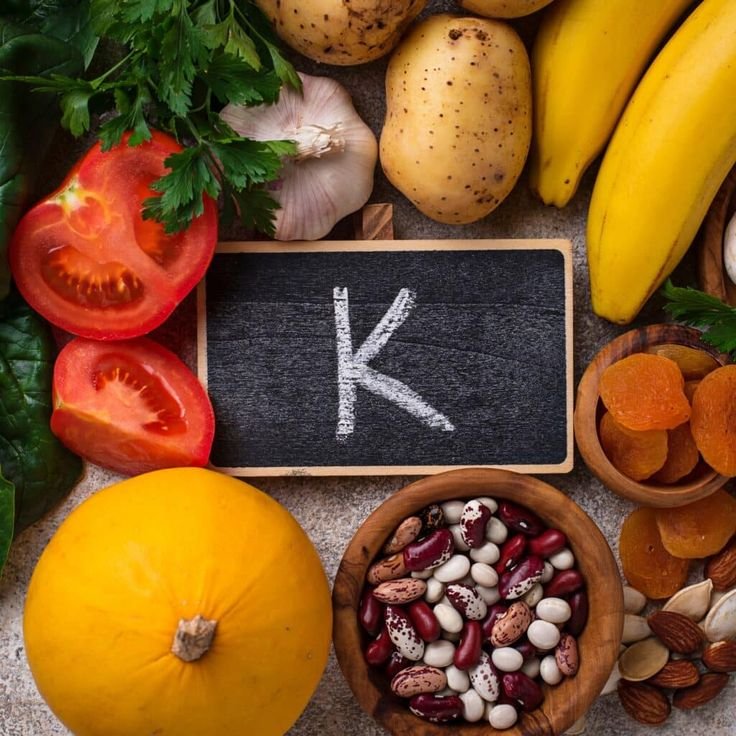
- Function: Essential for blood clotting and bone health.
- Sources: Leafy greens, broccoli, soybeans.
- Deficiency: Excessive bleeding, easy bruising.
- Excess: Rare, but can interfere with blood-thinning medications.
3. The Role of Vitamins in the Body
Vitamins play multiple roles that are critical to health and well-being:
VitaminPrimary RoleSecondary Benefit
A Vision, immunity Skin health
B-complex Energy production, nerve function Brain and heart health
C Immune support, antioxidant Collagen synthesis
D Bone health, immune regulation Mental well-being
E Antioxidant protection Skin and eye health
K Blood clotting Bone mineralization
4. Vitamin Deficiencies and Their Impacts
Vitamin deficiencies can lead to a range of health problems. Some common examples include:
- Scurvy (Vitamin C deficiency): Weakness, anemia, gum disease.
- Rickets (Vitamin D deficiency): Bone deformities in children.
- Pellagra (Vitamin B3 deficiency): Dermatitis, dementia, diarrhea.
- Neural tube defects (Vitamin B9 deficiency): In unborn babies.
- Night blindness (Vitamin A deficiency): Poor vision in low light.
Populations at higher risk of deficiencies:
- Pregnant women
- Older adults
- Vegans and vegetarians
- People with malabsorption disorders (e.g., celiac disease)
- Alcoholics
5. How to Get Enough Vitamins Naturally
Eating a balanced, varied diet is the best way to get all the essential vitamins. Here’s how:
Eat the Rainbow
Consume a variety of fruits and vegetables to get a wide range of vitamins. For example:
- Red/orange foods (carrots, peppers) for Vitamin A
- Green leafy veggies (spinach, kale) for Vitamins K, C, and folate
- Citrus fruits for Vitamin C
Include Whole Grains and Proteins
Whole grains and lean proteins (like eggs, poultry, and beans) are great sources of B vitamins.
Dairy and Fortified Foods
Dairy products and fortified cereals or plant-based milk are good sources of Vitamin D, B12, and calcium.
Healthy Fats
Fat-soluble vitamins (A, D, E, and K) require fat for absorption. Include sources like nuts, seeds, olive oil, and avocados.
6. Should You Take Vitamin Supplements?
Supplements can be helpful, especially when:
- You have a diagnosed deficiency.
- You’re pregnant or breastfeeding.
- You follow a restrictive diet (e.g., veganism).
- You have certain medical conditions or are elderly.
However, supplements should not replace whole foods and should be taken under medical advice. Over-supplementation can lead to toxicity, especially with fat-soluble vitamins.
7. Myths and Facts About Vitamins
- Myth: “More vitamins mean better health.”
- Fact: Excessive intake can be harmful, especially for fat-soluble vitamins.
- Myth: “All vitamins work independently.”
- Fact: Many vitamins work together. For instance, Vitamin D helps in calcium absorption, and Vitamin C boosts iron absorption.
- Myth: “Supplements are always necessary.”
- Fact: Most people can get enough vitamins through diet.
8. Tips for Maintaining a Vitamin-Rich Diet
- Eat seasonal and local produce.
- Avoid overcooking vegetables to preserve nutrients.
- Store fruits and vegetables properly to prevent nutrient loss.
- Combine fat-soluble vitamins with healthy fats for better absorption.
- Read nutrition labels on packaged foods for added vitamin content.
9. Conclusion
✅ Conclusion: Why Vitamins Deserve Global Attention
Vitamins are not just nutrients—they are lifelines. Inadequate intake leads to serious health complications, especially in children, women, and vulnerable populations. Global bodies like WHO and national governments including India have made strides, but challenges remain due to poverty, lack of awareness, and dietary limitations.
A coordinated approach involving food fortification, education, supplementation, and behavior change is crucial to closing the vitamin gap and achieving UN Sustainable Development Goal 2: Zero Hunger and SDG 3: Good Health and Well-being.
Vitamins are the unsung heroes of nutrition, required in tiny amounts yet indispensable to human health. From supporting immunity and energy to safeguarding vision, bones, and mental health, each vitamin has a unique role. By eating a well-rounded diet rich in fruits, vegetables, whole grains, proteins, and healthy fats, most people can meet their vitamin needs naturally. In certain situations, supplements can help bridge gaps — but they should never replace nutritious food.
Remember, health is built on balance. A vitamin-rich life is a vital step toward a healthier, more vibrant you.

1 thought on ““Are You Getting Enough Vitamins? Know the Symptoms of Deficiency””